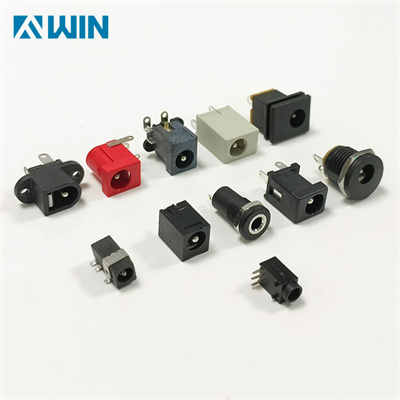KNOWLEDGE
What does DC power jack play in electronic devices
Imagine a DC power jack as the "energy portal" of your electronic devices—a seemingly unassuming yet crucial component that serves as the gateway for direct current (DC) to travel from chargers, batteries, or power adapters into the gadgets that depend on it. This vital connector can be found either on the exterior of a device, such as the side panel of a wireless router, or integrated into its internal circuit board. Its primary function is to establish a stable, secure connection with a compatible plug, ensuring a consistent flow of power.

Crafted for durability and reliability, DC power jacks are engineered with precision. Conductive metal elements are used to facilitate seamless current transfer, while high-quality insulated plastic encases these components, providing robust protection against short circuits and electrical hazards. This design allows the jack to withstand repeated plugging and unplugging without compromising performance, ensuring your devices receive a safe and uninterrupted power supply.
But the DC power jack connector is far more than just a “hole for a plug”—it’s a safety gatekeeper for your device. Here’s why: Most of your gadgets (from your phone and laptop to a desk lamp or portable speaker) run on DC power, which needs to flow in one steady, consistent direction. Ever wondered about the AC power from your wall outlet? It’s not what these devices need—your charger first converts that AC power to DC. The jack’s key role is to make sure this converted DC power has the right voltage and current for your gadget. If the power is too strong or too weak, the jack acts sort of like a filter, blocking mismatched power and preventing damage that could fry your device’s internal parts.
This safety “gatekeeping” only works when the jack pairs with the right DC power jack connectors—the plugs on the end of your charger cords. These connectors follow standard sizes: for example, 5.5x2.1mm (common for routers) . This standardization means you won’t accidentally plug a tablet charger into a camera, for instance. Many connectors also have polarity markers (small + or – signs) to ensure current flows in the correct direction. And a quick note: The DC power jack is often called a DC power socket too—they’re essentially two names for the same “power doorway” component.
Column navigation
NEWS
CONTACT ME
CONTACT:
Skype:evelynhwang2013
phone:15999819066
E-mail:fvwin@fvwin.com
ADD:NO.168,Technology East Road,Shijie Town,Dongguan,GD,CN